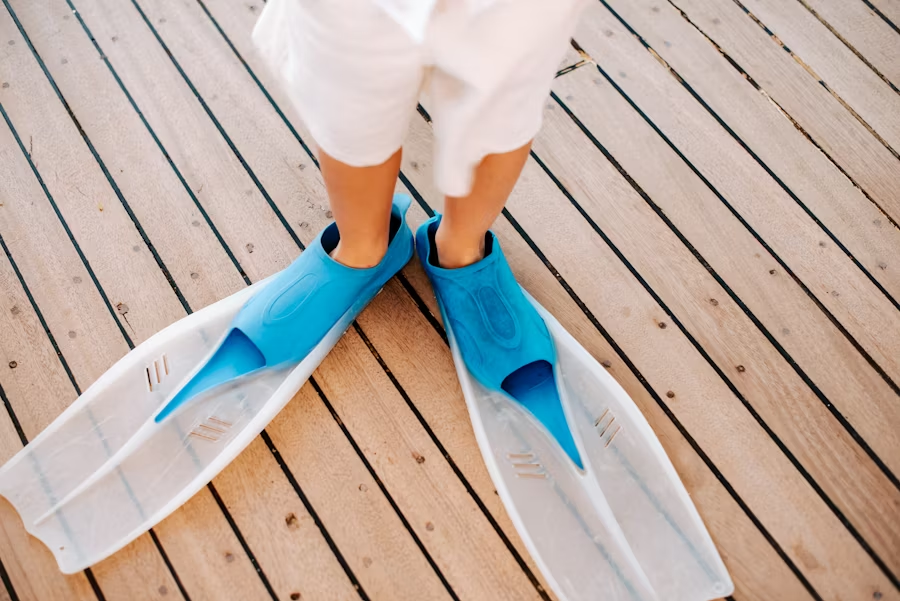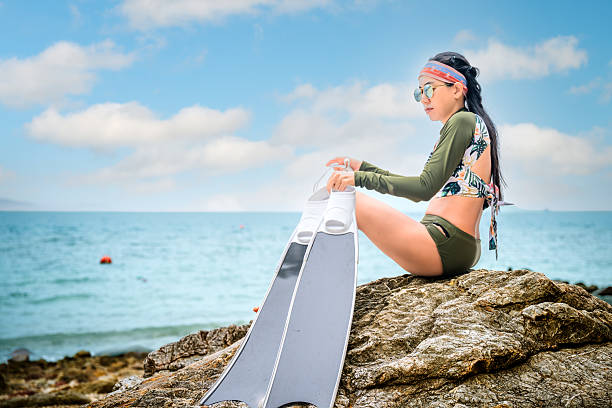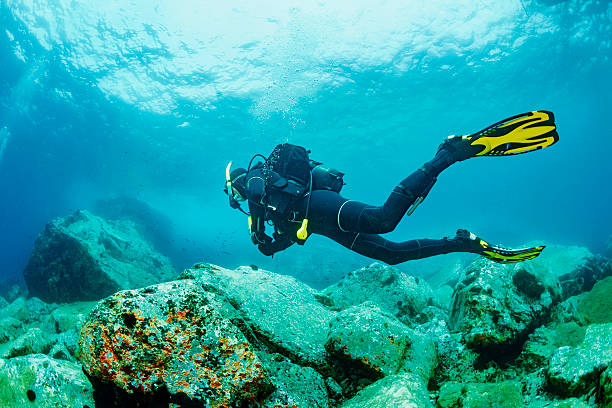A high-quality mask gives you a secure fit and makes an unforgettable dive experience. So it directly enhances user satisfaction. In this guide, we review the top 5 free diving masks and provide expert advice to help you source professional-grade equipment with confidence.
What Is a Free Diving Mask and Why It Matters
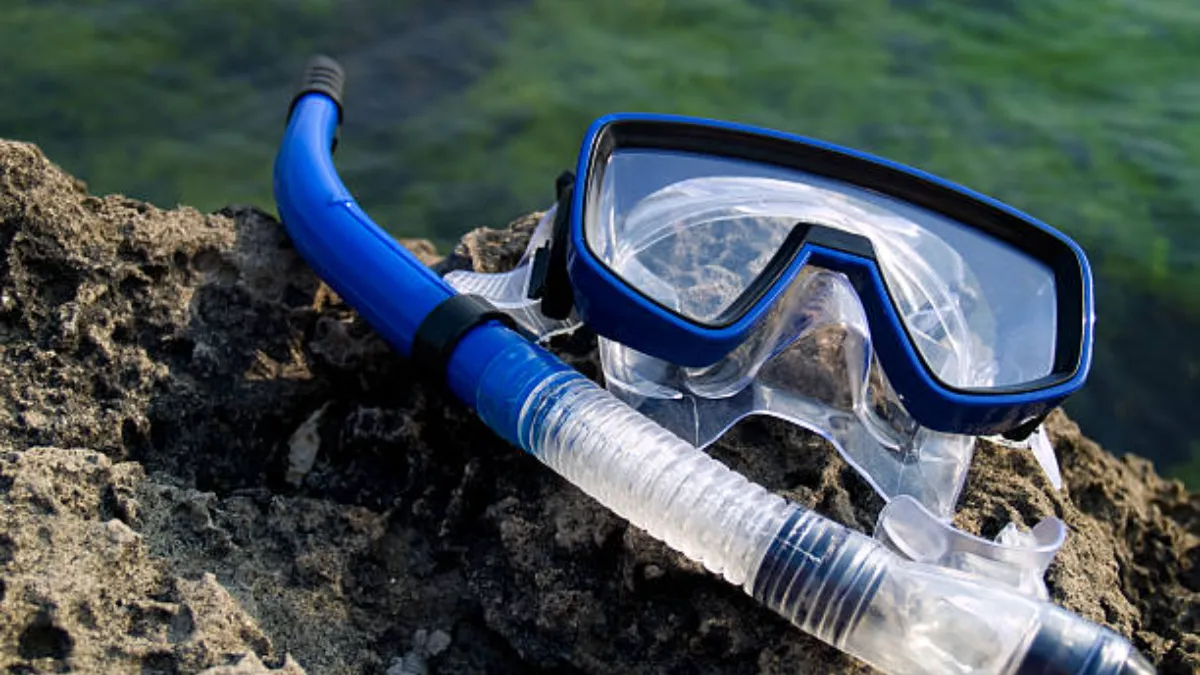
A free diving mask is a low-volume underwater vision device made specifically for breath-hold diving. And its core designs are as follows:
Seals air tightly around your eyes and nose so you can see clearly and equalize pressure without water leaking in.
Keeps its internal air space very small—often less than half the volume of a standard snorkeling mask—so you use less of your limited breath to equalize as you go deeper.
Places the lenses very close to the eyes and angles them for a wide, natural field of vision under pressure.
This combination is essential because water pressure increases rapidly: at only 10 m the pressure doubles, and at 30 m it’s four times surface pressure. A high-volume mask will compress (“mask squeeze”), distort your view, and force you to waste precious air. A true freediving mask minimizes that effect, allowing safer, calmer descents.
In manufacturing terms, these masks use softer, high-grade silicone skirts that stay flexible at depth, tempered or ultra-clear glass lenses for optical clarity, and lightweight frames shaped to reduce drag. They are not just smaller; they are engineered from the ground up for pressure management, low drag, and unobstructed vision.
Top 5 Free Diving Masks for 2025
Vanguard “M-1417” Adult Free Diving Mask
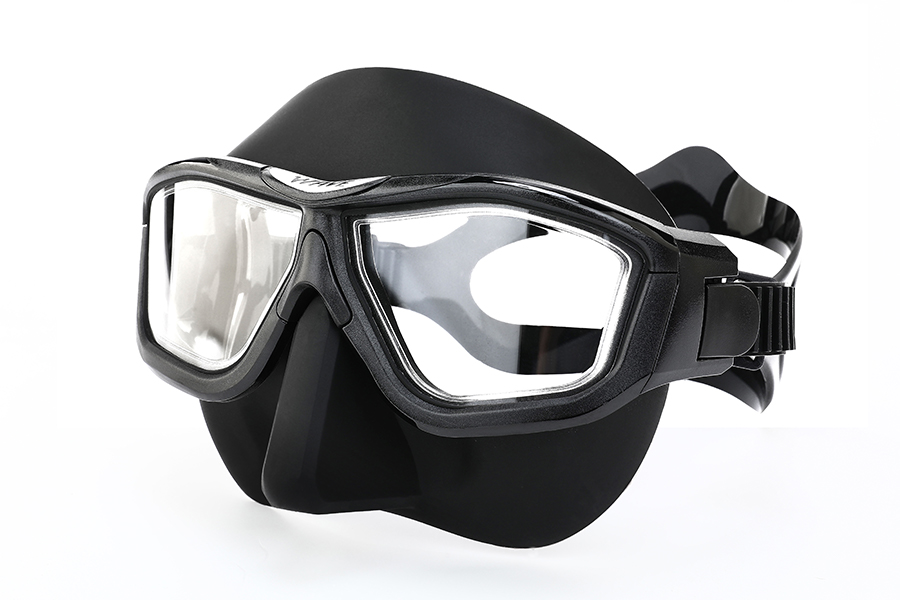
Recommendation: ☆☆☆☆☆
Vanguard Swimming has a strong reputation in freediving gear for producing low-volume, high-performance masks. The M-1417 combines precise engineering with comfort-focused design. Its tempered glass lenses sit extremely close to the eyes, reducing internal air volume and making equalization smoother on deeper dives. The soft silicone skirt adapts well to a range of adult face shapes, and the polycarbonate frame keeps the mask lightweight without compromising durability.
Why Choose It:
Ultra-low internal volume (approx. 80–90 ml) reduces equalization effort, saving breath for deeper dives
Lens placement allows a natural field of view of roughly 120° horizontally
Soft, hypoallergenic silicone skirt molds to the face without excessive pressure, minimizing leakage
Polycarbonates frame is rigid enough for stability yet light enough to reduce drag
Split strap system with micro-adjust buckles keeps the mask firmly in place during descents
Use Scenario:
Ideal for beginner and intermediate divers who want a reliable mask for both training and recreational freediving. Its low-volume design helps new freedivers practice deeper dives with less strain on their air supply.
Cressi “Nano” Freediving Mask
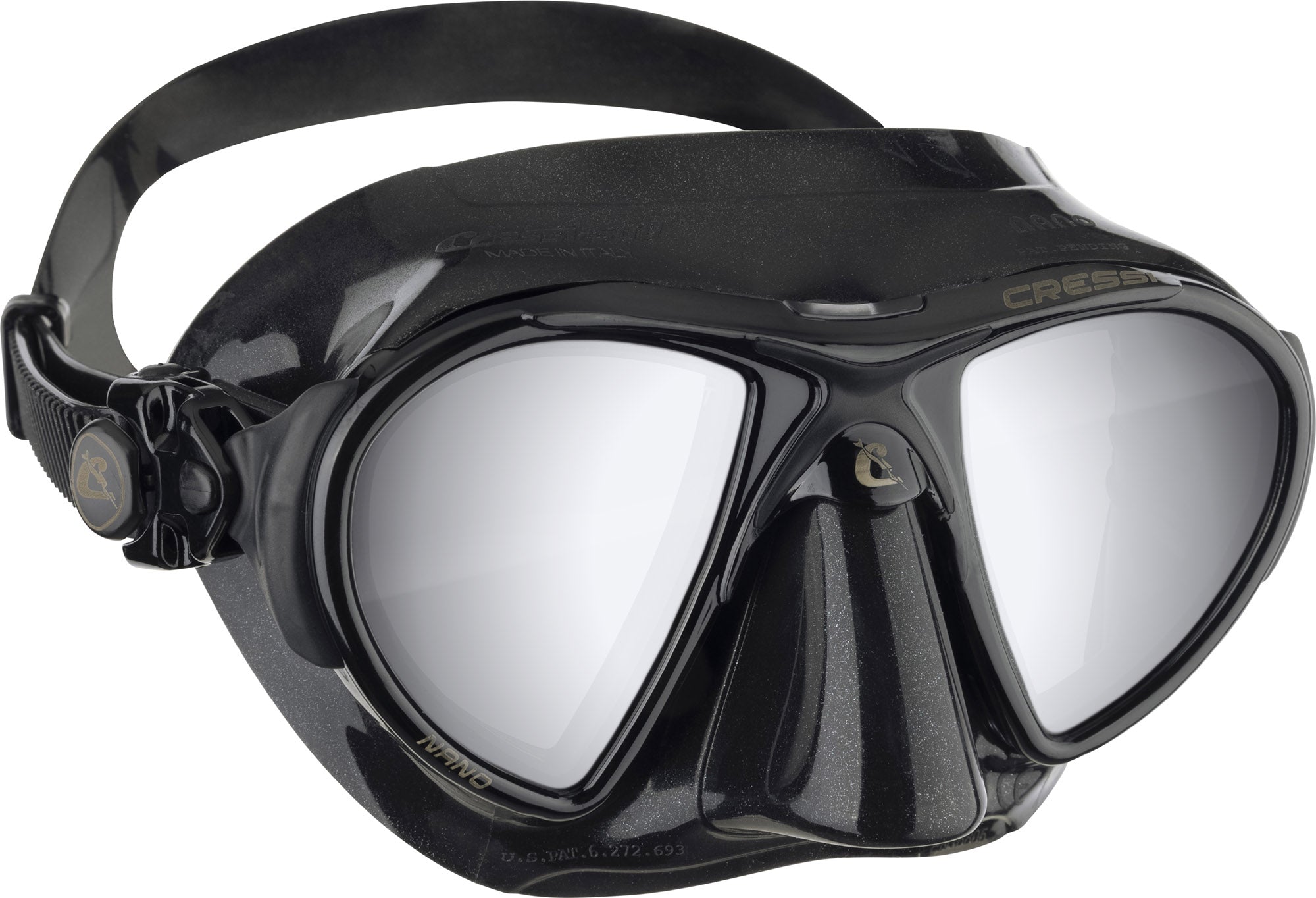
Recommendation: ☆☆☆☆☆
Cressi’s Nano is renowned for its extremely low internal volume, making it a favorite among advanced freedivers. Its tempered glass lenses are positioned extremely close to the eyes, allowing almost direct vision while reducing the air needed for equalization. The ABS frame and silicone skirt are engineered for minimal weight and precise fit. Its compact profile also reduces drag and improves hydrodynamics.
Why Choose It:
Internal volume around 75–85 ml for efficient equalization at depth
Lens-to-eye distance of just 10 mm, enhancing peripheral awareness
Lightweight ABS frame reduces drag during descents
Silicone skirt designed to seal against a variety of face shapes without discomfort
Suitable for freedivers performing repeated deep dives or spearfishing
Use Scenario:
The Nano is best for intermediate and advanced divers who prioritize minimal air consumption and maximum efficiency. It’s ideal for training, deep freediving, or competitive settings where every descent matters.
Aqualung “Sphera X” Freediving Mask
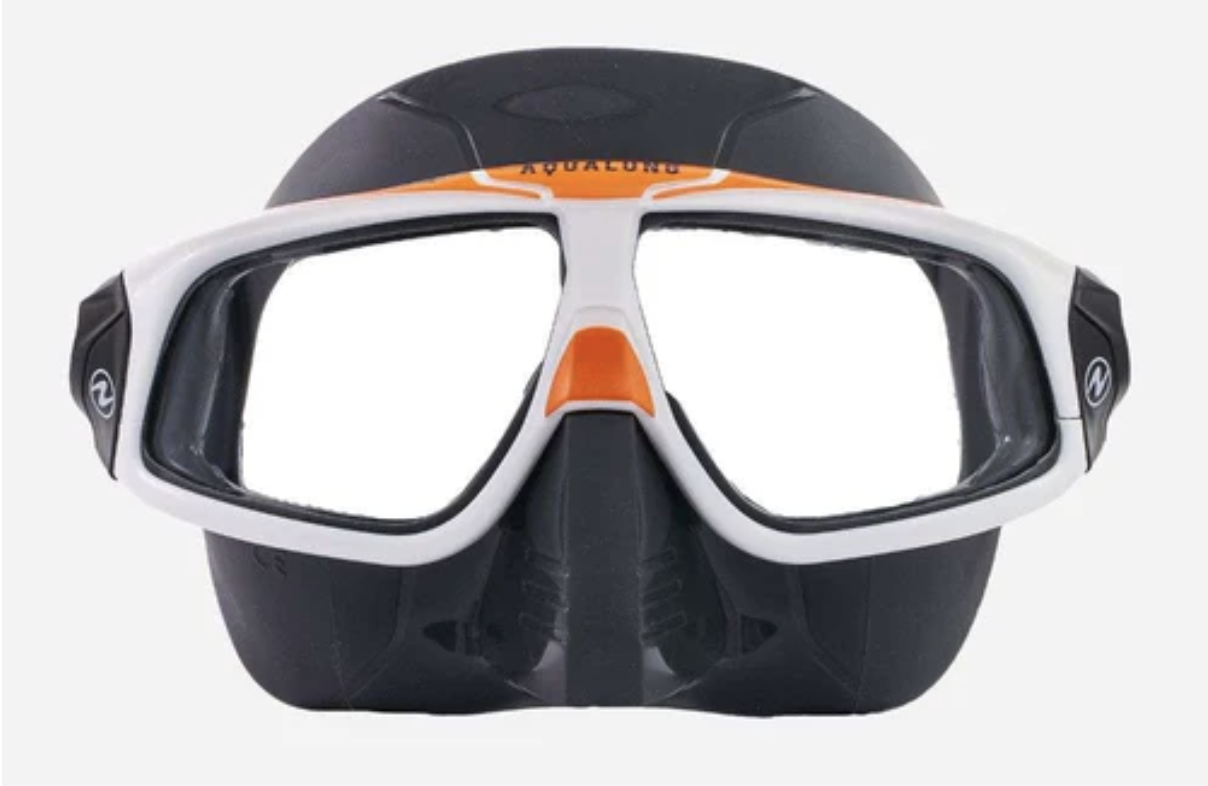
Recommendation: ☆☆☆☆☆
Aqualung’s Sphera X focuses on a wide panoramic view while maintaining moderate internal volume. Its curved tempered glass lenses provide nearly 150° horizontal vision, useful for underwater navigation and photography. The silicone skirt is slightly stiffer than other masks, offering a stable seal without compromising comfort. Its polycarbonate frame supports the lens structure and adds long-term durability.
Why Choose It:
Panoramic lens design provides broader peripheral vision for enhanced situational awareness
Moderate internal volume (~120 ml) balances comfort and ease of equalization
Silicone skirt optimized for a secure seal, particularly for longer underwater sessions
Rigid polycarbonate frame ensures lens stability even under repeated pressure changes
Slightly heavier but ideal for photographers or divers prioritizing wide vision
Use Scenario:
Best suited for divers who need an expansive field of view, such as underwater photographers, instructors, or those exploring complex underwater environments. The Sphera X is excellent for both recreational and professional use.
Beuchat “Maxlux S” Freediving Mask
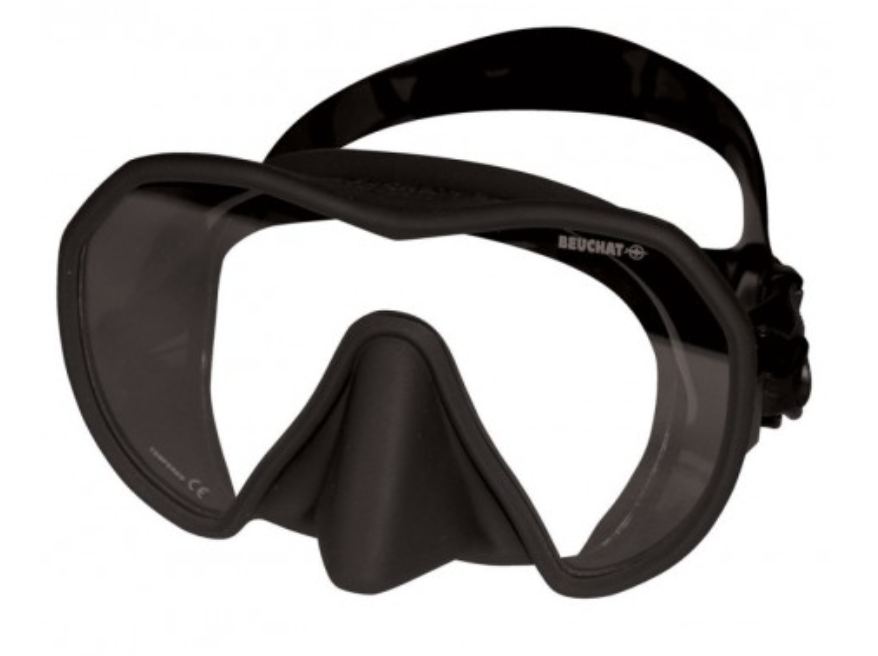
Recommendation: ☆☆☆☆
The Maxlux S is a frameless, ultralight mask designed for efficiency and minimal drag. Its tempered glass lenses sit very close to the eyes, and the lightweight nylon frame reduces pressure on the face during extended dives. The skirt is made of soft silicone that maintains its flexibility in colder water, providing a reliable seal across various facial profiles.
Why Choose It:
Frameless design significantly reduces weight and drag underwater
Low internal volume (~85 ml) makes equalization smoother and less effortful
Soft silicone skirt adapts well to different face shapes without leakage
Nylon frame maintains shape while minimizing added pressure on the face
Perfect for freedivers aiming for long sessions or repetitive descents
Use Scenario:
Ideal for divers who want a minimal, low-drag mask for training, spearfishing, or long recreational dives. Its ultralight design reduces fatigue, making it easier to focus on technique and performance.
Mares “Viper” Freediving Mask
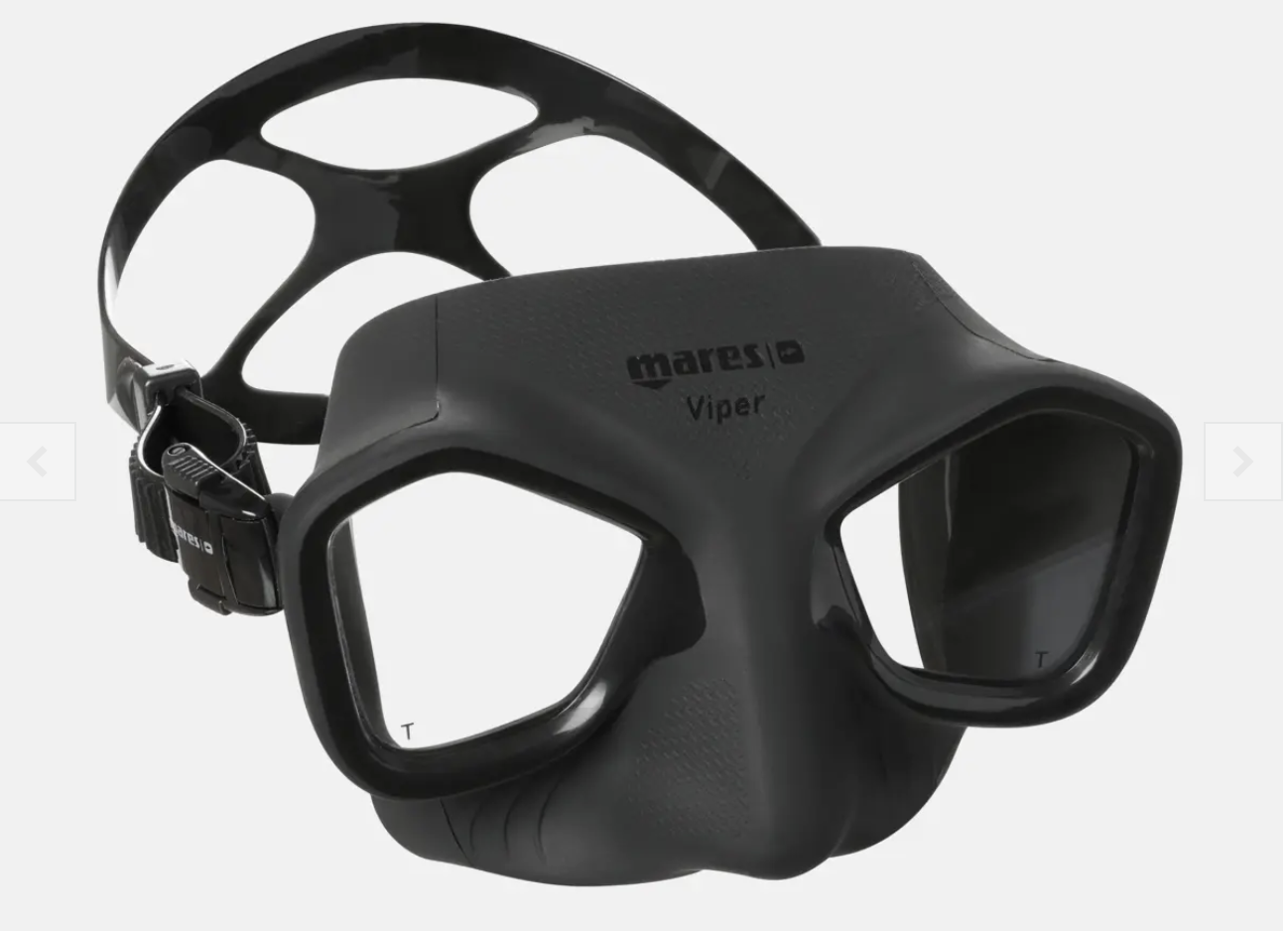
Recommendation: ☆☆☆☆
The Mares Viper is a versatile low-volume mask with a focus on practical performance. Its tempered glass lenses and silicone skirt offer a secure seal, while the polycarbonate frame ensures durability. A unique feature is its fast-drain system, allowing divers to clear water quickly without removing the mask. Ergonomic strap design keeps the mask stable during rapid or repeated dives.
Why Choose It:
Low internal volume (~90 ml) for efficient equalization
Fast-drain design allows easy clearing of water during dives
Silicone skirt provides a comfortable and adaptable seal for most face shapes
Polycarbonate frame offers durability without adding weight
Popular worldwide among both recreational and competitive freedivers
Use Scenario:
The Viper is suitable for all skill levels. Its combination of low volume, fast-drain capability, and stable fit makes it ideal for repeated dives, spearfishing, and general freediving activities. Divers seeking reliability and ease of use will find this mask particularly appealing.
How to Choose the Right Free Diving Mask for Your Skill Level
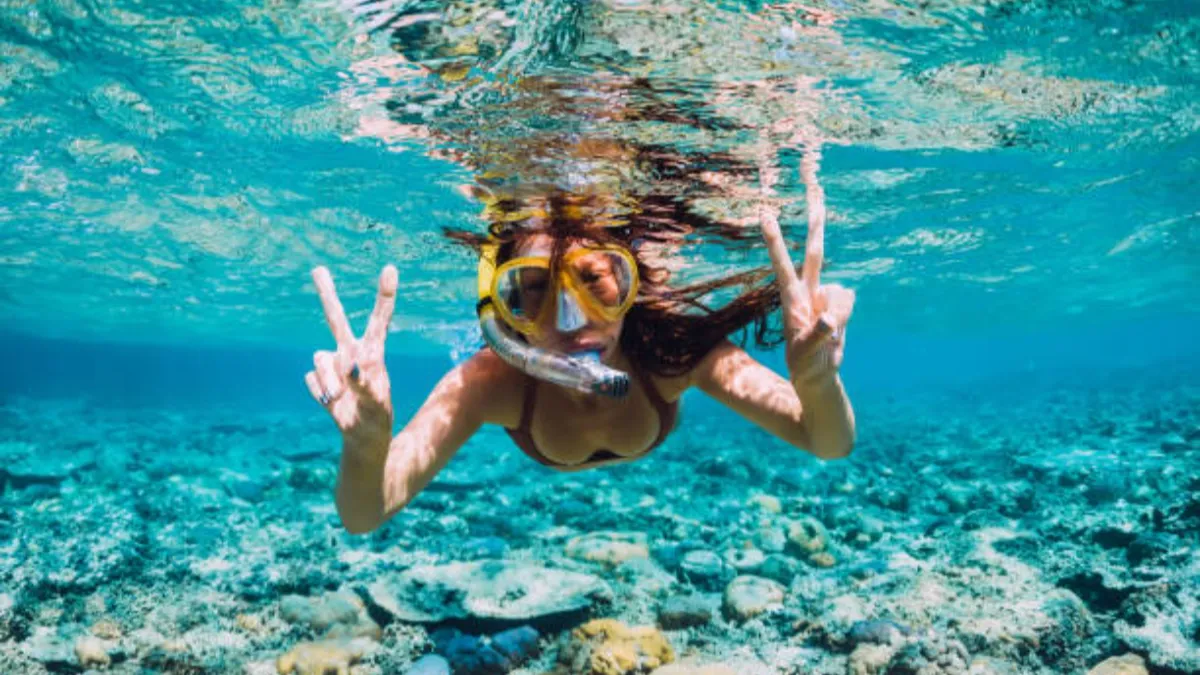
The right mask can reduce fatigue, make equalization easier, and improve your underwater awareness. Every detail matters: internal volume, lens placement, skirt material, and strap system all affect performance. Here’s a professional guide for divers at different skill levels.
Beginners: Focus on Fit, Comfort, and Stability
As a new freediver, your main priority should be a mask that fits securely and feels comfortable. At shallow depths, you’re still learning equalization, so:
Choose a moderate internal volume mask (around 100–120 ml). Extremely low-volume masks aren’t necessary yet and can feel tight.
Look for a high-grade silicone skirt that adapts easily to your face shape. Soft skirts help prevent leaks and reduce jaw or forehead pressure.
Ensure the mask has a stable strap system with micro-adjustments. A well-balanced strap keeps the mask centered and reduces the need for constant adjustments.
Pro Tip: Place the mask on your face without the strap and inhale gently through your nose. If it stays in place without gaps, the skirt seals correctly. This test ensures a proper fit before your first dives.
Intermediate Divers: Balance Air Efficiency and Field of View
Once you dive deeper and equalization becomes more frequent, you need a mask that reduces internal air volume without sacrificing visibility:
Target a low-volume mask (80–100 ml). Smaller air space reduces the effort required to equalize as you descend.
Evaluate lens placement and angle. Lenses closer to the eyes improve peripheral vision and minimize distortion under pressure.
Choose a silicone skirt with moderate stiffness. A skirt that’s too soft may collapse at depth; too stiff can feel uncomfortable.
Pro Tip: Pay attention to the mask’s hydrodynamic profile. Masks with smooth edges and a compact frame reduce drag, which can make repetitive dives less tiring.
Advanced Divers: Optimize for Depth, Efficiency, and Repetitive Dives
Experienced freedivers need a mask that performs reliably at depth and under repeated use:
Look for ultra-low volume masks (<80 ml) to minimize the amount of air needed for equalization. Every milliliter counts when you’re diving deeper than 30 meters.
Consider lens curvature and optical design. Some masks have slightly angled or domed lenses to maximize field of view and reduce peripheral distortion.
Skirt design and material are critical. High-grade silicone that maintains flexibility at low temperatures ensures a stable seal and prevents mask squeeze.
Choose ergonomic strap systems that distribute pressure evenly. For repeated dives, this prevents jaw fatigue and ensures consistent performance.
Pro Tip: Test your mask in conditions that mimic your typical dive. Cold water, low visibility, or strong currents can reveal weaknesses in fit or seal that aren’t apparent in the pool.
Final Thoughts
Whether you’re looking to outfit a dive school, stock your shop, or simply want to invest in high-quality equipment, selecting masks with the right combination of comfort, durability, and efficiency ensures satisfaction for everyone who uses them.
Vanguard’s M-1417 combines tempered glass, soft silicone skirts, and lightweight frames, delivering reliable performance and comfort across skill levels for consistent underwater experiences. Discover Vanguard’s freediving masks today and secure high-quality, reliable models for your business.
